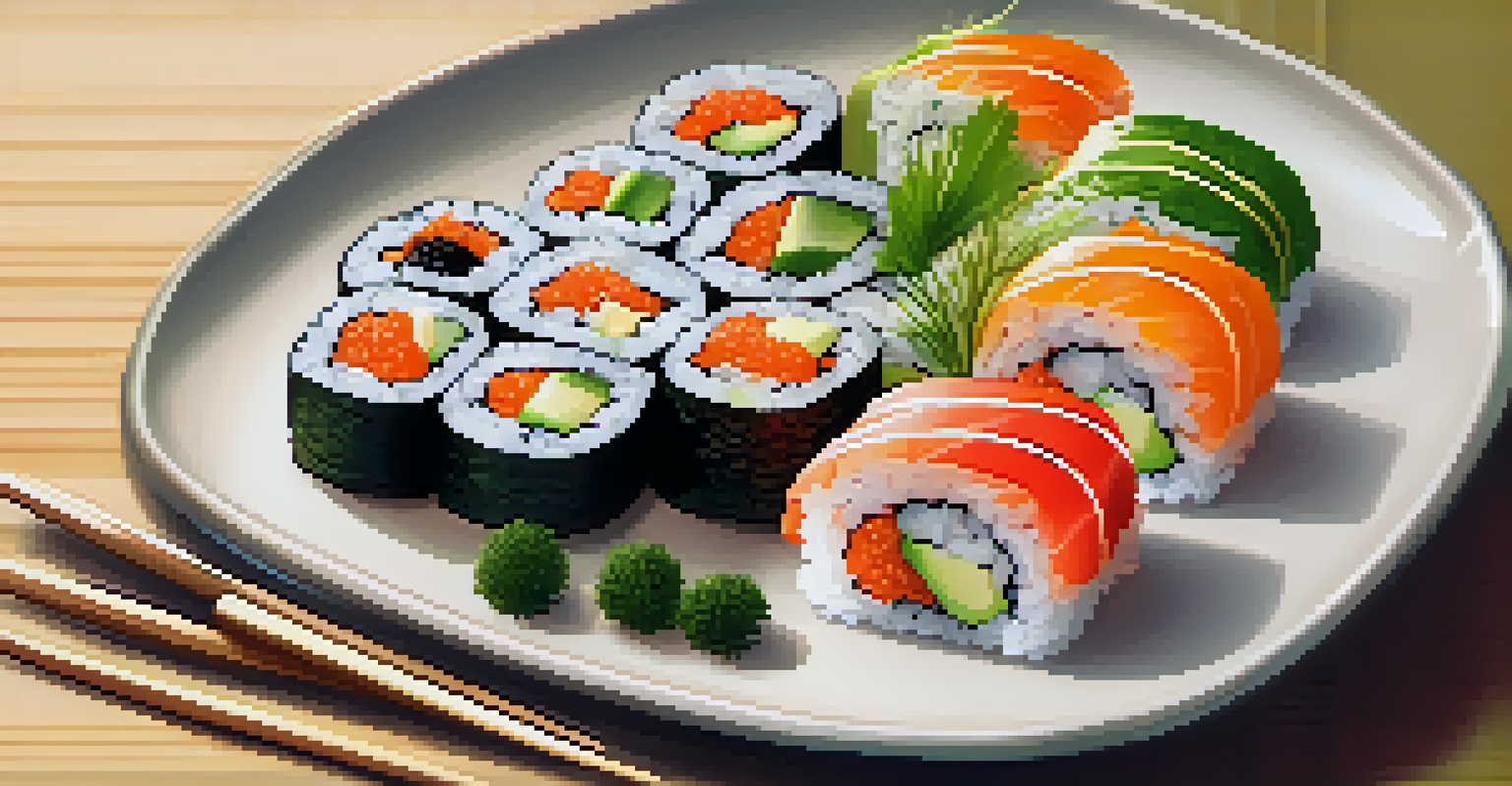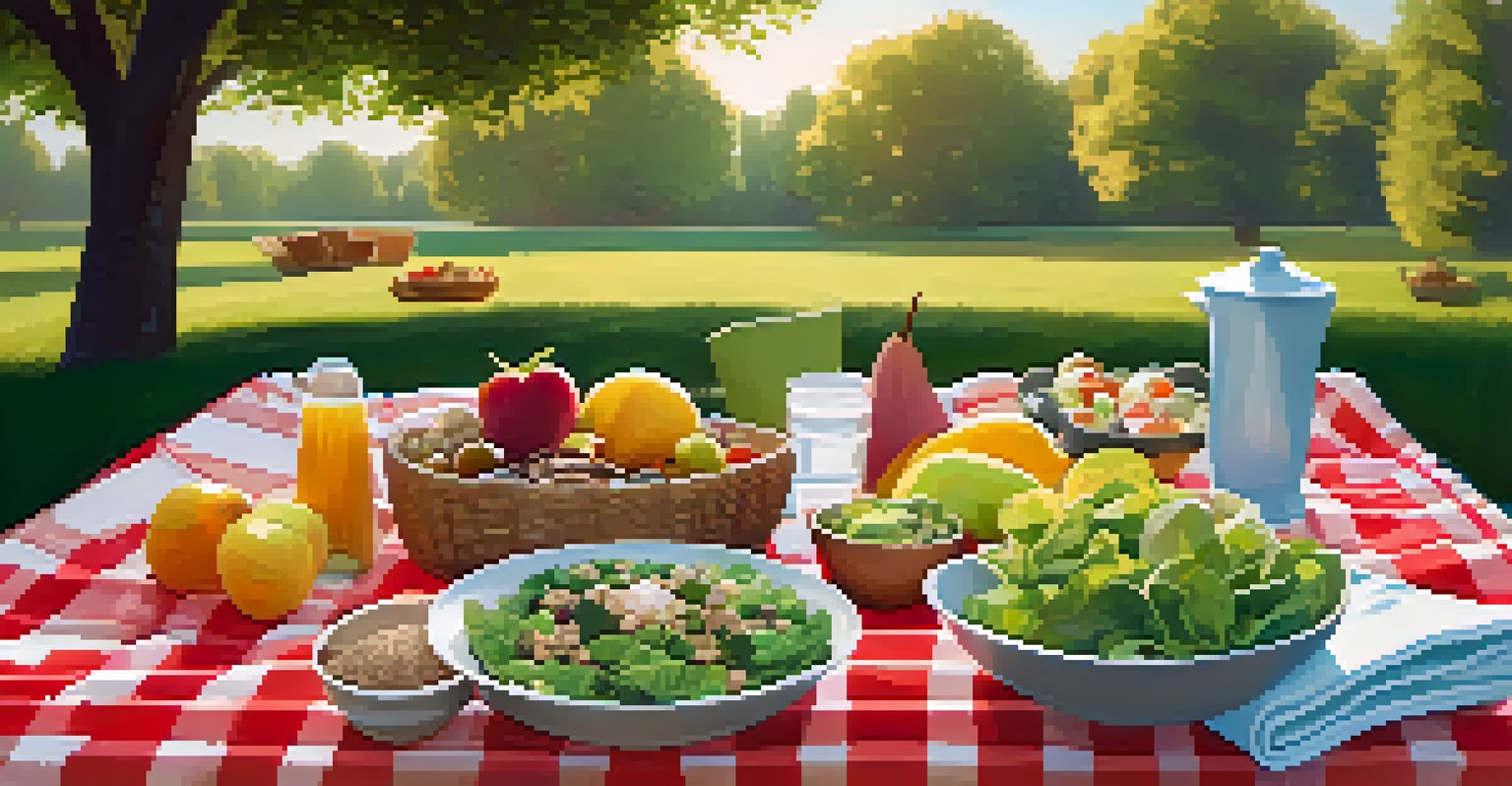Step-by-Step Process for Planning Raw Food Weekly Meals

Understanding the Basics of Raw Food Diet
A raw food diet primarily consists of unprocessed and uncooked foods. This means fresh fruits, vegetables, nuts, seeds, and sprouted grains, all brimming with nutrients. By eating raw, you maximize the health benefits of these foods, as cooking can often diminish their nutritional value.
Let food be thy medicine and medicine be thy food.
To get started, it’s helpful to know that the raw food lifestyle encourages organic and locally sourced ingredients whenever possible. This not only boosts the flavor of your meals but also supports sustainable farming practices. Think of it as a way to connect more deeply with your food and the environment.
Additionally, being mindful of the balance in your meals is crucial. You might consider incorporating a variety of colors and textures to make your dishes visually appealing, as well as nutritionally balanced. This lays the groundwork for your weekly meal planning, ensuring you have a diverse and satisfying menu.
Setting Goals for Your Raw Food Meal Plan
Before diving into meal prep, take a moment to set clear goals for your meal plan. Are you aiming for weight loss, increased energy, or simply trying to incorporate more raw foods into your diet? Having specific objectives can help guide your choices and keep you motivated throughout the week.

Once you have your goals in mind, consider how many meals you’ll need to prepare. If you’re new to raw eating, you might start with just one or two raw meals a day and gradually work up from there. This allows you to adjust your taste buds and habits without overwhelming yourself.
Embrace Variety in Raw Meals
Incorporating a diverse range of colors, textures, and flavors in your raw food meals can enhance both nutritional balance and enjoyment.
Finally, remember that flexibility is key. Life can be unpredictable, so having a meal plan that’s adaptable will make it easier to stick to your goals. Think of your meal plan as a roadmap, guiding you through the week while still allowing for spontaneous adventures in the kitchen.
Creating a List of Raw Food Ingredients
An essential step in planning raw food meals is creating a comprehensive shopping list. Start by listing your favorite fruits and vegetables, nuts, seeds, and any specialty items like spirulina or nutritional yeast that you enjoy. This will not only streamline your shopping experience but also inspire your meal creations.
You are what you eat, so don't be fast, cheap, easy, or fake.
Next, think about seasonal produce, as it tends to be fresher and more flavorful. Check local farmers' markets or grocery stores to see what’s in season. Incorporating seasonal ingredients can also help you save money while adding variety to your meals.
Lastly, don’t forget about pantry staples. Items like olive oil, vinegar, and herbs can elevate your dishes and keep your meals exciting. Having a well-stocked pantry will encourage creativity and make it easier to whip up meals on the fly.
Designing Your Weekly Raw Food Meal Plan
Once you have your ingredient list, it’s time to design your meal plan. Start by mapping out the days of the week and deciding which meals you want to prepare. Consider themes, like 'Meatless Mondays' or 'Tropical Tuesdays,' to narrow down your options and keep things fun.
As you plan, think about the balance of flavors and textures. Incorporate a mix of crunchy salads, creamy smoothies, and hearty wraps to create a satisfying variety. This will ensure you don’t get bored and are more likely to stick with your raw food journey.
Set Clear Meal Planning Goals
Establishing specific objectives for your raw food diet helps guide your meal preparation and keeps you motivated.
Additionally, consider batch cooking some components, like nut milks or dressings, to save time during busy weekdays. Prepping ingredients in advance can help you throw together meals quickly and effortlessly while still enjoying the benefits of fresh, raw foods.
Incorporating Snacks and Desserts into Your Plan
Snacks and desserts can be a delightful part of a raw food meal plan, keeping your energy levels up and satisfying your sweet tooth. Think of things like raw energy balls, fruit salads, or nut-based treats that are both nutritious and delicious. Including these can make your meal plan feel more complete and enjoyable.
When planning snacks, aim for a mix of protein, healthy fats, and carbohydrates. For instance, pairing apple slices with almond butter or enjoying a handful of mixed nuts can provide sustained energy throughout the day. These snacks will not only keep hunger at bay but also contribute to your overall nutrient intake.
Don’t shy away from experimenting with raw desserts, either! There are endless possibilities, from raw chocolate mousse to fruit-based ice creams. By satisfying your cravings with healthier options, you’ll find it easier to stick to your raw food goals while still enjoying the pleasures of food.
Making Adjustments and Staying Flexible
As you embark on your raw food journey, it’s important to remain open to adjustments. Maybe you discover that certain ingredients don’t sit well with you, or you find that you prefer lighter meals on busy days. By paying attention to how your body feels, you can tweak your meal plan accordingly.
Flexibility can also mean changing up your meals based on what’s available or in season. If you notice that strawberries are particularly delicious one week, feel free to swap them into your planned meals. This will not only keep your meals fresh but also help you develop a deeper appreciation for the foods you consume.
Flexibility is Essential
Being adaptable with your meal plan allows for adjustments based on seasonal produce and personal preferences, making the journey more enjoyable.
Lastly, remember that planning doesn’t have to be perfect. It’s okay to have off days or to experiment with new recipes that might not work out. Embrace the journey, and don’t stress too much about sticking rigidly to your plan; enjoy the exploration of raw foods!
Tips for Successfully Sticking to Your Raw Food Plan
Sticking to a raw food meal plan can be challenging, but it’s definitely achievable with the right mindset. One effective tip is to keep your meals simple. Focus on easy recipes that require minimal preparation, making it less of a chore to eat raw.
Another helpful strategy is to keep raw foods visible and accessible. Store prepped fruits and vegetables in clear containers at eye level in your fridge. This way, you’re more likely to reach for a healthy snack instead of processed options when hunger strikes.

Finally, find a community or support system to encourage you on your raw food journey. Whether it’s online forums, local groups, or friends who share your interests, having a support network can provide motivation and inspiration. Sharing recipes and experiences can make the journey much more enjoyable!